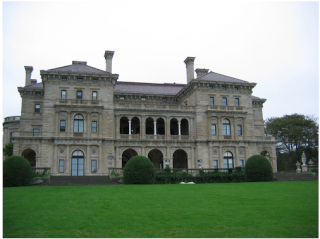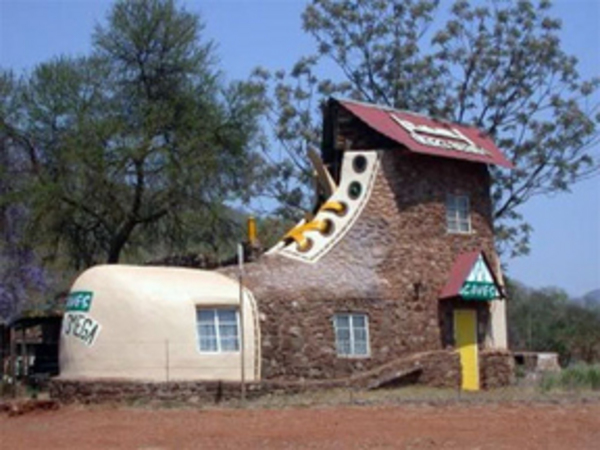
Some of the earliest descriptions of structures built by Aboriginal people describe them using building materials such as boughs and branches for timber frames covered with bark and hides for cladding. Stone structures such as caves and natural shelters were also used. Whereas numerous examples of stone structures can be seen today, wooden structures are more fragile and survive only in very dry, sheltered inland areas.
But traditonal building techniques survived where materials perished. Long after European settlers had moved through a district, Aboriginal people continued to use timber and plant materials. Many new materials were also adapted to traditional techniques, such as corrugated iron and flattened metal drums for cladding, as well as canvas, hessian and other materials.
Warrangesda Mission is one of the few places in NSW where mission buildings used by Aboriginal people in the late 19th and early 20th century have survived. Warrangesda operated between 1885 and 1924 and had a layout that seems typical of missions of the period. A church and assembly ground in the centre were surrounded by the manager's house, teacher's house, school room, ration store and fences. Rows of small timber-frame houses marked the edges of the settlement. As well as these weatherboard and corrugated iron-clad houses, there were dormitories for single girls and boys. Some of the houses had small fenced yards and water tanks and were furnished with government-issue items such as iron bedsteads. Beyond the formal station there were peripheral camps, usually temporary with canvas tents and bough shelters. After World War II the development of the welfare state included the provision of Aboriginal housing by agencies such as the Aborigines Welfare Board. Between 1945 and 1969 the Board provided home loans and sponsored the building of houses for leasing to Aboriginal families. The building of six timber houses at Coomaditchy Lagoon in 1963 is one example.
The Board also conducted summer camps for Aboriginal children, especially those from the Far West. Some of these camps were held at La Perouse, where canvas tents and canvas nissan-hut style dormitories were erected for sleeping areas with meals provided from large canteens.
The terrace houses of the Block in Redfern were originally built in the 1880s to house the workers employed at the Eveleigh Railway Workshops. In 1973 the land was purchased for Aboriginal housing. The struggle to gain ownership and control of the Block by the Aboriginal community was a major part of the movement of Aboriginal people towards self determination. Aboriginal control of Aboriginal Affairs was the major theme and it was for the Aboriginal residents of the Block that many of the first Aboriginal controlled services in Australia were developed.
Over the last 20-30 years, as direct government controls over Aboriginal people have been scaled back, distinct 'types' of housing used by Aboriginal communities are less easily described. Exceptions include Mutawintji in Western NSW where the Aboriginal employment scheme workers are currently building housing featuring specific living facilities for Aboriginal people, such as large communal living areas.
There is no such thing as a typical 'Aboriginal house' in NSW. Rather, Aboriginal peoples used different types of housing in different regions at different periods in the past. Identifying the surviving houses lived in by Aboriginal peoples can help us to understand Aboriginal and general history. Such houses or their sites need to be identified in heritage studies and surveys and assessed for their significance. In doing so, it is important to remember the need for culturally appropriate consultation with communities, and the critical role of oral history in locating and understanding such potential heritage places.
While there have recently been significant improvements in the poor living conditions experienced by many Aboriginal people in NSW, it has been acknowledged at both state and national levels that reform is essential to ensure that Aboriginal people in both rural and urban areas are able to access safe, healthy, affordable and secure housing.
Extensive consultation with Aboriginal people in NSW revealed their vision for one agency with responsibility to plan and deliver Aboriginal housing and housing-related infrastructure, to improve co-ordination, overcome duplication and maximise housing outcomes for Aboriginal people.
This vision culminated in the enactment of the NSW Aboriginal Housing Act 1998 which established the Aboriginal Housing Office as a statutory authority responsible to the NSW Minister for Housing. It is responsible for developing, managing delivery of, and evaluating housing assistance programs for Aboriginal people in NSW. The AHO is governed by an all Aboriginal Board. If I wan (Which I won't

) can I have a red V flag









 more abou house in austria is that they can have up too seven houses cool right no realy my house has 6 rooms our house in austria could have many shapes
more abou house in austria is that they can have up too seven houses cool right no realy my house has 6 rooms our house in austria could have many shapes

























